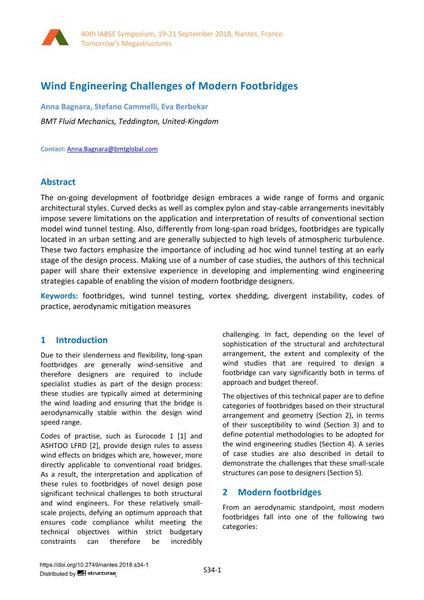Wind Engineering Challenges of Modern Footbridges

|
|
|||||||||||
Détails bibliographiques
| Auteur(s): |
Anna Bagnara
(BMT Fluid Mechanics, Teddington, United-Kingdom)
Stefano Cammelli (BMT Fluid Mechanics, Teddington, United-Kingdom) Eva Berbekar (BMT Fluid Mechanics, Teddington, United-Kingdom) |
||||
|---|---|---|---|---|---|
| Médium: | papier de conférence | ||||
| Langue(s): | anglais | ||||
| Conférence: | IABSE Symposium: Tomorrow’s Megastructures, Nantes, France, 19-21 September 2018 | ||||
| Publié dans: | IABSE Symposium Nantes 2018 | ||||
|
|||||
| Page(s): | S34-1 | ||||
| Nombre total de pages (du PDF): | 8 | ||||
| DOI: | 10.2749/nantes.2018.s34-1 | ||||
| Abstrait: |
The on-going development of footbridge design embraces a wide range of forms and organic architectural styles. Curved decks as well as complex pylon and stay-cable arrangements inevitably impose severe limitations on the application and interpretation of results of conventional section model wind tunnel testing. Also, differently from long-span road bridges, footbridges are typically located in an urban setting and are generally subjected to high levels of atmospheric turbulence. These two factors emphasize the importance of including ad hoc wind tunnel testing at an early stage of the design process. Making use of a number of case studies, the authors of this technical paper will share their extensive experience in developing and implementing wind engineering strategies capable of enabling the vision of modern footbridge designers. |
||||
| Mots-clé: |
passerelles
|
||||
